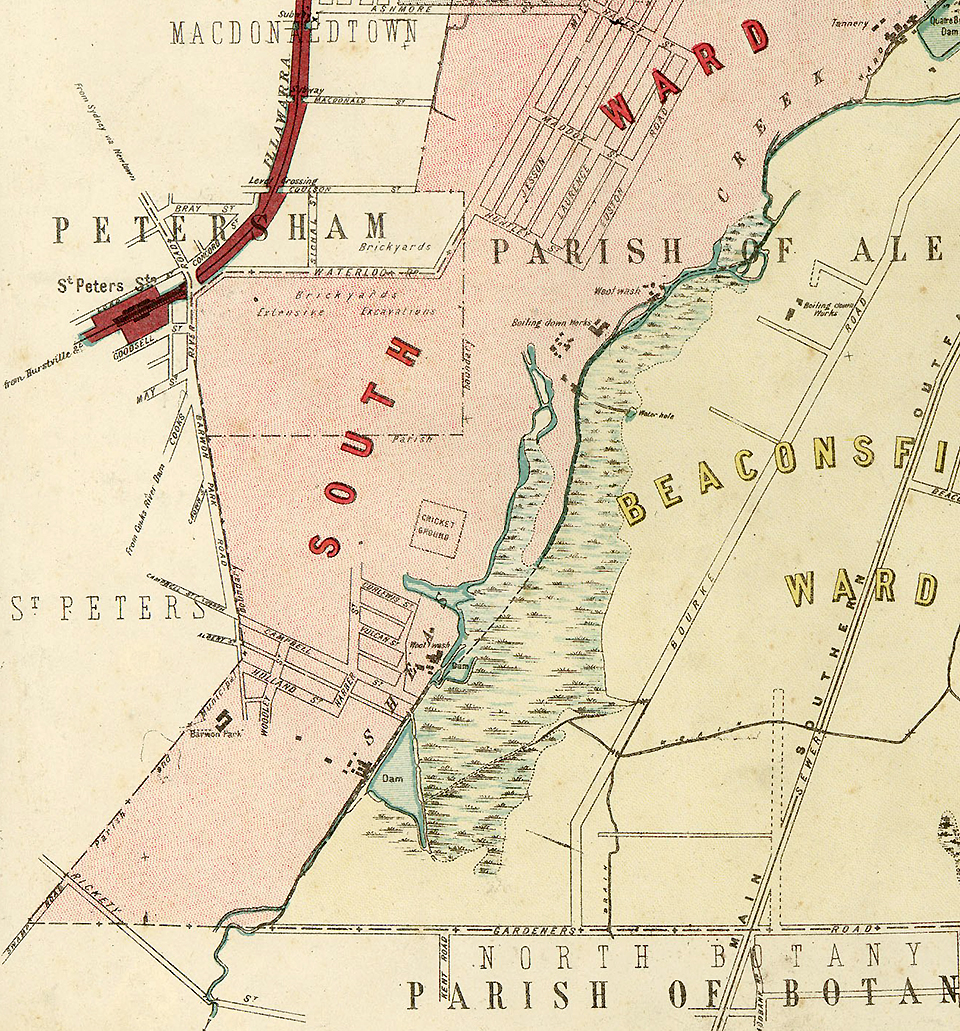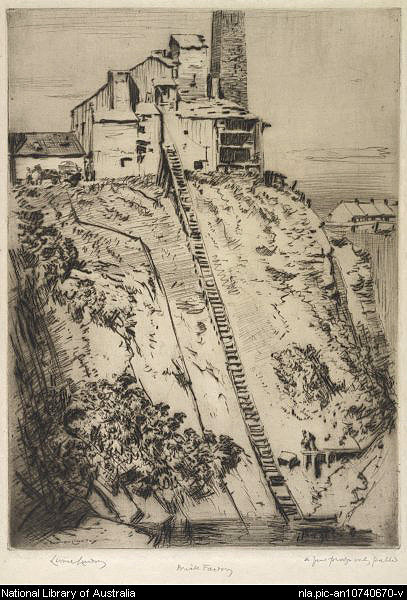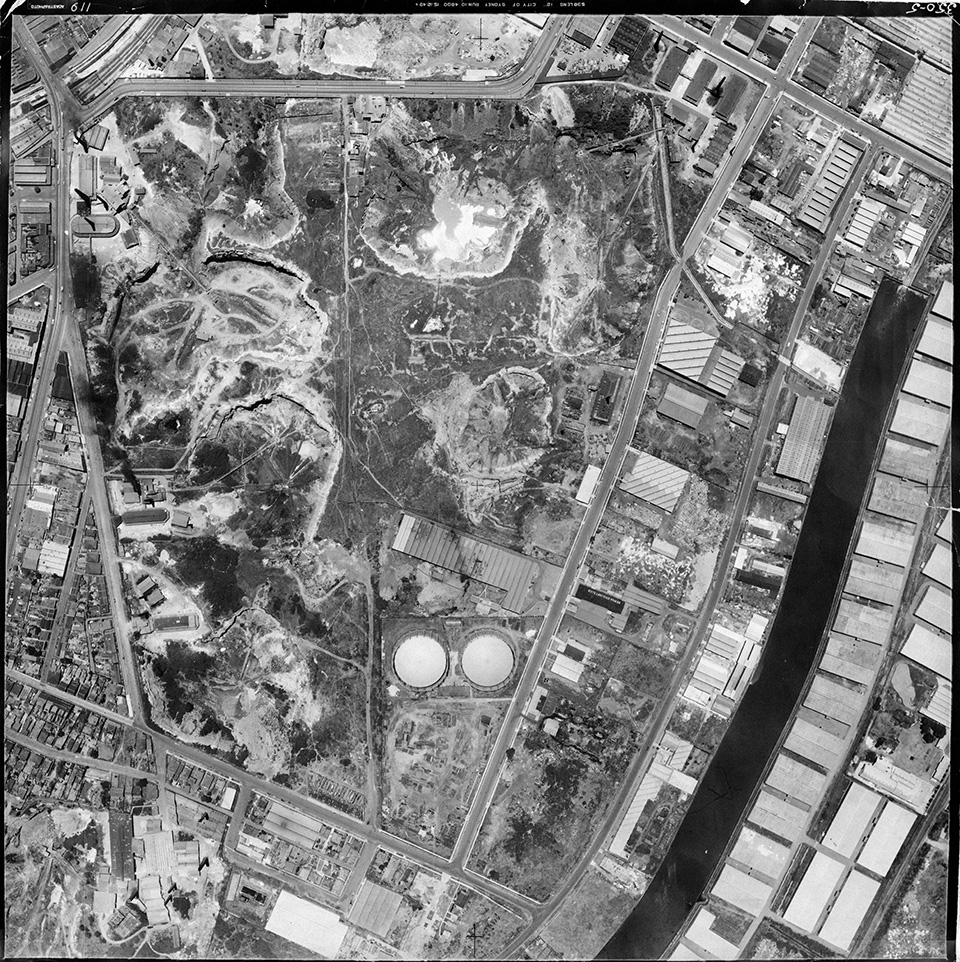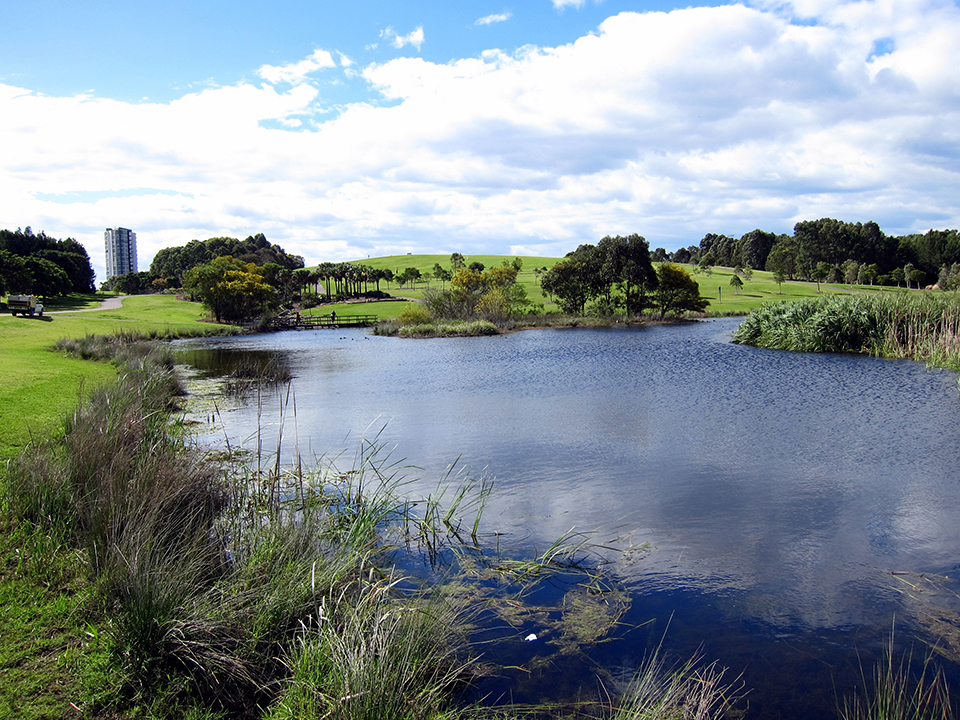The Dictionary of Sydney was archived in 2021.
Sydney Park: kangaroo ground to brickpits
Citation
Persistent URL for this entry
To cite this entry in text
To cite this entry in a Wikipedia footnote citation
To cite this entry as a Wikipedia External link
From a kangaroo ground to the brickpits of St Peters
[media]The land now occupied by the public open space of Sydney Park was once a kangaroo-hunting ground for the Gadigal and Wangal. It was granted to emancipated convict and publican Elizabeth Needham in 1796 and passed through the hands of Gregory and John Blaxland and then Daniel Cooper, who leased it to brickmakers. Used by Bedford (Austral) Brickworks until the 1940s, the site then became a municipal waste depot.
The geography
[media]Before European settlement the area was a forest of turpentine and ironbark trees. The south-eastern area of the park is on Botany sands, with swamps, marshes and heath associated with the waterway now known as Sheas Creek. The north-west part of the park sits over a belt of Wianamatta Shale, useful as a source of brick-making clay.
Land between Parramatta Road and the Cooks River (today's Newtown-St Peters area, including Sydney Park), was known as the District of Bullanaming (or Bulanaming) at the beginning of the nineteenth century. The Newtown-St Peters area was also referred to as the 'Kangaroo Ground'. Local Aboriginal people, the Gadigal and Wangal, hunted kangaroo on the grasslands here and fished and camped at the swamps, creeks and rivers that crisscrossed the area.
It is likely that that the original road to the Cooks River, extending from Forbes Street near Sydney University to St Peters where it joins the Princes Highway, followed an Aboriginal track across the ridgeline through Newtown. Originally known as the Bulanaming Road and later as the Cooks River or Newtown Road, the road was officially named King Street in 1877.
Needham's grant
Sydney Park is on part of a 40-acre (10 hectare) land grant to Elizabeth Needham in 1796. Needham (née Gore) was a First Fleet convict who later became a successful Sydney businesswoman. Recorded as both a servant and a needlewoman in her native England, she was reputedly the daughter of the coachman to Lady Charlotte Finch, who was the Royal Governess to King George III.
Elizabeth's first marriage was to Henry Needham in 1782. In July 1786 she was convicted for stealing two pairs of silk stockings worth 30 shillings and received a sentence of seven years. She was transported to Australia on the First Fleet vessel Lady Penrhyn. In February 1788 she bigamously married William Snailham and bore him three children. Snailham died in 1796 and Elizabeth married a third time to John Driver; they had three children together. Following Driver's death in 1810, she married a fourth time to publican and dealer Henry Edward Marr. She held the license for the Wheatsheaf Inn from 1797 and ran a warehouse and general store on Castlereagh Street. [1]
In 1796, Elizabeth Needham's sentence expired and she received a 40-acre (10 hectare) land grant in her own right in the district of Bulanaming on the site of today's Sydney Park. She sold her grant in 1808 to John and Gregory Blaxland. The land was purchased by Daniel Cooper in 1822, and it became part of Cooper family's extensive landholdings, the Waterloo Estate. Several generations of the Cooper family preferred to lease rather than sell and subdivide their land in the nineteenth century. Portions of the former Needham grant were leased by brickmakers from the early 1880s and probably earlier.
Brickmaking at Sydney Park
[media]The rich alluvial soil in the Newtown-St Peters-Alexandria area was considered ideal for gardens and orchards while its clay beds were suitable for pottery and brickmaking. A number of brick, pottery and tile works were established in the area from the early nineteenth century to exploit this readily available resource.
In 1887, Josiah Gentle purchased just over two acres (0.8 hectares) of land on the corner of the Cooks River Road (today's Princes Highway) 'with all buildings and rights of way'. [2] Gentle established the Bedford Brick Works here in 1893, naming it after his home town in England.. Clay was extracted from the deep pits and large kilns fired it into bricks.
Gentle was one of many brick makers living and working in the Newtown and St Peters area during the nineteenth century. He had immigrated to Sydney with his family from Bedfordshire in England in the 1850s and had begun his brick making career in Waterloo with his stepfather James Rawlings, and by the 1870s was operating brick works in Newtown and Petersham.
From 1887, Gentle began buying up land on the site of today's Sydney Park for the Bedford Brick Works. His business survived when others did not because Gentle invested in steam-powered machinery and modern kilns. His three sons carried on the business after his death in 1912.
[media]In 1936 Austral Brick Company bought out the Bedford Brick Works and operated on the site until 1970. Austral had operated another brickworks further south at the corner of the Princes Highway and Cowper Street since the 1880s and these continued to operate until 1983.
There were a number of Aboriginal workers employed at Austral's St Peter Brickworks. Richard Alexander (Alec), William Donald (Don) and Adam Eatock were some of the Aboriginal employees at the brickyards in the 1920s. Later Aboriginal workers at the brickyards came from the Port Macquarie area. [3]
St Peters tip
[media]In 1948, the deep brick-pits became a major municipal waste depot operated by the City of Sydney Council. It was known by several names including St Peters Tip; Campbell Road Disposal Depot; Alexandria Tip; and the Disposal Depot Alexandria. Household rubbish was dumped in the former brickpits until 1976, when the tip closed and a layer of soil and building rubble was placed over the former brick-pits.
Sydney Park
[media]In 1991 ownership of the Sydney Park site was transferred to South Sydney Council, and to the City of Sydney after the two councils merged in 2004. It was then converted to public open space.
Sydney Park includes a series of visually prominent hills which provide panoramic views of the city skyline and Sydney Airport and are used for recreational activities such as kite flying. Stormwater detention ponds have been transformed into wetland habitat to partly recreate the pre-European environment. At the same time the area's industrial heritage has been preserved with the kilns and brickworks chimneys at the corner of Sydney Park Road and the Princes Highway.
Alan Davidson Oval, at the corner of Sydney Park Road and Euston Road, was opened in 2003 and provides facilities for cricket and Australian Rules football. It is named after a cricket all-rounder who played 44 tests for Australia and was chairman of Cricket Australia. The AIDS Memorial Grove next to Council's plant nursery on Barwon Park Road is the result of annual community tree planting days which began in 1994. CARES (Community and Road Education Scheme) on Sydney Park Road opened in 2004 and provides a safe place for children to learn about road safety.
Further Reading
City of Sydney. 'Working lives'. Cadigal Newtown, Newtown Project, http://www.newtownproject.com.au/welcome-to-the-newtown-project/cadigal-newtown-introduction/10/
City of Sydney. 'History of Sydney Park' http://www.cityofsydney.nsw.gov.au/learn/sydneys-history/people-and-places/park-histories/sydney-park
Conybeare Morrison and Partners Pty Ltd. Sydney Park Plan of Management. 1982.
Convict Records. Elizabeth Needham. http://www.convictrecords.com.au/convicts/needham/elizabeth/71931.
EDAW (Australia) Pty Ltd. Sydney Park Plan of Management. 1995.
Greenland, Hall. 'Eatock, Lucy Harriet (1874–1950)'. Australian Dictionary of Biography, http://adb.anu.edu.au/biography/eatock-lucy-harriet-12898/text23259.
Tropman and Tropman Architects. Sydney Park Brick Kiln and Chimney Precinct Heritage and Structural Assessment, 2000.
Tropman & Tropman Architects. Sydney Park Brick Kilns Precinct, cnr Princes Highway & Sydney Park Road, Alexandria Conservation management plan, prepared for City of Sydney Council, 2007.
South Sydney City Council. Sydney Park Amended Plan of Management. 2003.
National Library of Australia, Reuss & Browne's map of the subdivisions in and about Sydney and environs, 1857. MAP F 108 Tile b1. http://nla.gov.au/nla.map-f108-b1.
State Library of NSW. Reuss & Halloran's map of Newtown brickyards leases: Needham's grant and Waterloo Estate, 1881. M2 811.1825/1881/1. http://library.sl.nsw.gov.au/record=b3189960~S2.
Notes
[1] Convict Records, Elizabeth Needham, http://www.convictrecords.com.au/convicts/needham/elizabeth/71931
[2] Land Titles Office, Book 364 No 190
[3] Ron Ringer, interview with Bill Wheatley in The BrickMasters 1788- 2008, Sydney: Dry Press Publishing, 2005), 229; cited City of Sydney. 'Working lives'. Cadigal Newtown, Newtown Project, http://www.newtownproject.com.au/welcome-to-the-newtown-project/cadigal-newtown-introduction/10/, viewed 23 June 2016
.








